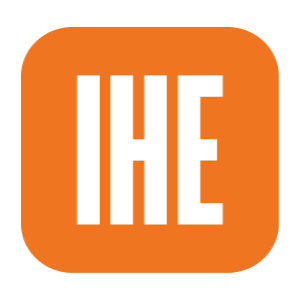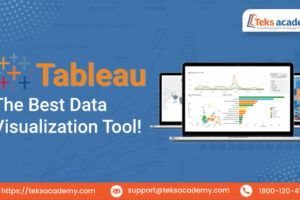
3 Questions for Higher Ed Market Researcher Scott Jeffe
We have a long history of working with Scott Jeffe during his time as the VP of research at RNL. Recently, Scott moved on from RNL to begin working as an independent higher ed market research consultant and adviser to universities. To learn more about the work that Scott does and to hopefully gain some insight into where things may be going with online and graduate programs, we asked Scott the following questions.
Q: Tell us about what it means to be an independent higher ed market researcher. What sort of projects do you work on? How does what you do for universities differ from the services available from traditional consulting firms?

A: In higher education, the best market research means more than just gathering data—it means showing up as a consultant. That’s something I’ve really learned throughout my career. Too often, I see research reports that are, frankly, hard to interpret or apply. The data might be sound, but it’s overly complex, the visualizations are unclear or the recommendations are disconnected from the realities of how colleges and universities actually operate.
I’ve had those moments—looking at a data visualization and spending several minutes just trying to figure out what it’s supposed to say. And I know that no dean, provost or president has the time to do that. I’ve also read plenty of conclusions that are technically accurate but completely impractical in the real-world context of higher ed. That’s the kind of disconnect that leads campus leaders to quietly shelve the report, walk away and think, “Well, that was a waste of money.”
That is exactly what my work today seeks to avoid. My research and consulting prioritize being more direct, actionable and grounded in higher ed’s current challenges. My work now spans both institutional consulting and national research, and I think that balance is part of what makes my approach effective. For example, I’ve recently completed national studies on graduate student expectations and mentorship, which give me insight into broader trends that I can then bring into highly tailored campus-level work.
Over the past six months, I’ve developed four core services designed specifically for this moment in higher ed—politically, economically and culturally. They’re affordable, practical and fast to implement. I don’t believe in one-size-fits-all solutions, but I do believe institutions deserve work that respects their time, their context and their need to move quickly on what matters.
That’s ultimately the difference between what I offer and what many vendors often provide. I’m not just delivering a report—I’m helping institutions make real decisions, grounded in both the data and the dynamics of higher ed today.
Q: What are the most significant challenges and opportunities for universities wanting to grow graduate and/or online enrollment today?
A: At the graduate level, one of the biggest looming challenges is the likely decline in international enrollment, which has quietly propped up graduate enrollment growth for the past several years. Under the Biden administration, we saw international graduate enrollment rise by more than 117,000 students—reaching over 500,000 total. Just last year, international students made up a full one-third of new graduate enrollments in the U.S., and over 200 institutions reported that international students represented more than 30 percent of their total graduate population.
But we have to be clear-eyed: Not only is that level of growth not sustainable, but decline is coming. Whether due to shifting geopolitics, visa policy changes or growing global competition, institutions will need to refocus their efforts on the domestic graduate market—and fast.
That said, there’s opportunity in the challenge. In fact, the current job market will likely nudge more adults to consider graduate study as a buffer or springboard during economic uncertainty. The catch? Institutions are now facing unprecedented competition. By some counts, we’re adding 800 new master’s programs each year. To grow—or even maintain—enrollment, institutions must have an acute understanding of what today’s graduate students expect. That means building a blueprint rooted in student preferences and behaviors and then aligning everything—program design, marketing, recruitment and support—around those insights.
That’s where much of my work comes in. Over the last two decades, I’ve helped institutions do exactly this through tools like my Scorecard and Playbook and the Audience Alignment Study, which zero in on how to position programs for today’s increasingly selective learners.
Now, on the online education side, the landscape is a bit more favorable at the moment—particularly due to the regulatory environment calming down. The Biden administration’s push to more heavily regulate online programs—particularly around OPMs and state reciprocity—has largely been shelved. That’s good news for smaller institutions, where online offerings often represent the best path to enrollment stability or growth. Interestingly, one of the unintended effects of that regulatory scrutiny is that OPM contract terms are now much more favorable than they were a few years ago. Institutions have more leverage.
In terms of opportunity, there are two major areas I’m watching closely. First, the long-discussed but rarely well-executed effort to serve the 30 to 40 million U.S. adults with some college and no credential is almost entirely an online opportunity. However, most institutions struggle to fully serve this group. The barriers tend to fall into three key areas: restrictive credit transfer policies, pricing models that remain out of reach and a misplaced assumption that these students will return to campus for their courses. Institutions that succeed here build fully online programs with wraparound support—advising, tech help, financial aid guidance—specifically designed for students who haven’t set foot on a campus in years. And when they do that, it doesn’t just help this population—it improves online education quality for everyone.
The second opportunity is more subtle but just as important: the increased demand from traditional undergraduates for access to online courses. While this isn’t online program growth in the classic sense, it presents a major advantage. A robust online course infrastructure doesn’t just support distance learners—it makes the entire campus experience more flexible, more attractive and more resilient. For institutions, that’s a strategic win across multiple audiences.
Q: How can universities better choose which programs to start and invest in and then grow enrollments to financially sustainable numbers?
A: At all levels, I think most institutions are doing a much better job now of integrating market data into their program decision-making. There’s a pretty direct line between the era when those insights were missing and the wave of program cuts we’re seeing now. For instance, Inside Higher Ed recently reported that Indiana’s public institutions have combined or eliminated over 400 programs that weren’t meeting fairly modest graduation thresholds. That’s a clear example of the consequences of earlier decisions made without solid market alignment.
When I work with institutions on program strategy, my role is really to facilitate a conversation that balances market data and institutional strengths. I bring the external perspective—labor market demand, competitor analysis, growth trends—and they bring the internal knowledge of what they’re truly good at. The goal isn’t just to chase hot programs, but to find areas where there’s strong or emerging market demand and where the institution already has expertise, capacity and visibility. That combination is where real opportunity lives.
Why take that approach? Because institutions need quick wins. We’re often working with limited time and resources and pressure to show results. If you can build momentum by improving or reconfiguring an existing program—something that already has a foundation—you get to impact faster and more cost-effectively. In fact, across dozens of program prioritization studies I’ve been involved in, I’ve rarely seen a proposed new program with more short- or midterm market potential than several underperforming existing ones. That’s why I usually recommend a 3-to-1 or 4-to-1 investment ratio favoring existing programs over net-new launches.
Once we identify the right programs to focus on, differentiation becomes key—especially in the online space, where commodification is a real concern. Institutions need detailed competitor intelligence, not just high-level benchmarking. We’re looking at how programs are positioned, how they’re structured and what messages they’re putting in front of students. That kind of granularity allows us to develop a true blueprint for differentiation—one that goes beyond clichés like “small class sizes” or “personalized attention” and speaks to what really sets a program apart.
And finally, with federal regulations increasingly focused on graduate outcomes and return on investment, it’s more important than ever to bake those metrics—job openings, wage growth, projected earnings—into the program planning process from the beginning. We’re entering a new phase where programs will be judged not just on academic merit or enrollment numbers, but on how they impact students’ long-term economic success.
So to me, the smartest institutions are those that align their strengths with market needs, invest in what they already do well and differentiate with purpose—grounded in real data.
Source link



